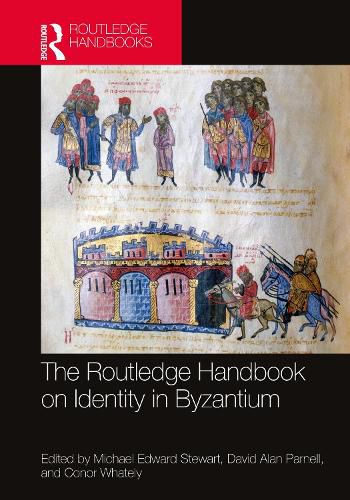Readings Newsletter
Become a Readings Member to make your shopping experience even easier.
Sign in or sign up for free!
You’re not far away from qualifying for FREE standard shipping within Australia
You’ve qualified for FREE standard shipping within Australia
The cart is loading…






This volume is the first to focus solely on how specific individuals and groups in Byzantium and its borderlands were defined and distinguished from other individuals and groups from the mid-fourth to the close of the fifteenth century. It gathers chapters from both established and emerging scholars from a wide range of disciplines across history, art, archaeology, and religion to provide an accurate representation of the state of the field both now and in its immediate future. The handbook is divided into four subtopics that examine concepts of group and specific individual identity which have been chosen to provide methodologically sophisticated and multidisciplinary perspectives on specific categories of group and individual identity. The topics are Imperial Identities; Romanitas in the Late Antique Mediterranean; Macro and Micro Identities: Religious, Regional, and Ethnic Identities, and Internal Others; and Gendered Identities: Literature, Memory, and Self in Early and Middle Byzantium. While no single volume could ever provide a comprehensive vision of identities on the vast variety of peoples within Byzantium over nearly a millennium of its history, this handbook represents a milestone in offering a survey of the vibrant surge of scholarship examining the numerous and oft-times fluctuating codes of identity that shaped and transformed Byzantium and its neighbours during the empire's long life.
$9.00 standard shipping within Australia
FREE standard shipping within Australia for orders over $100.00
Express & International shipping calculated at checkout
This volume is the first to focus solely on how specific individuals and groups in Byzantium and its borderlands were defined and distinguished from other individuals and groups from the mid-fourth to the close of the fifteenth century. It gathers chapters from both established and emerging scholars from a wide range of disciplines across history, art, archaeology, and religion to provide an accurate representation of the state of the field both now and in its immediate future. The handbook is divided into four subtopics that examine concepts of group and specific individual identity which have been chosen to provide methodologically sophisticated and multidisciplinary perspectives on specific categories of group and individual identity. The topics are Imperial Identities; Romanitas in the Late Antique Mediterranean; Macro and Micro Identities: Religious, Regional, and Ethnic Identities, and Internal Others; and Gendered Identities: Literature, Memory, and Self in Early and Middle Byzantium. While no single volume could ever provide a comprehensive vision of identities on the vast variety of peoples within Byzantium over nearly a millennium of its history, this handbook represents a milestone in offering a survey of the vibrant surge of scholarship examining the numerous and oft-times fluctuating codes of identity that shaped and transformed Byzantium and its neighbours during the empire's long life.